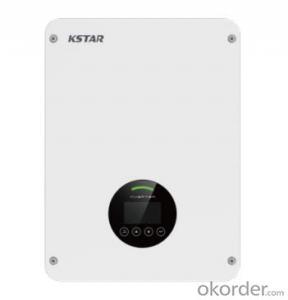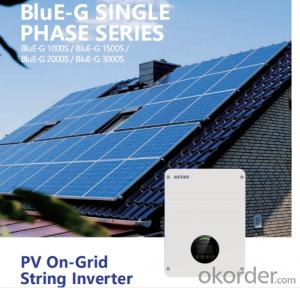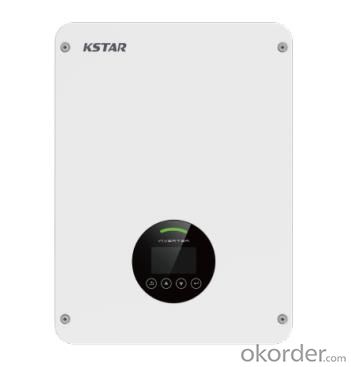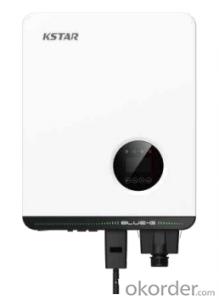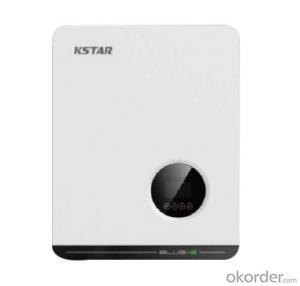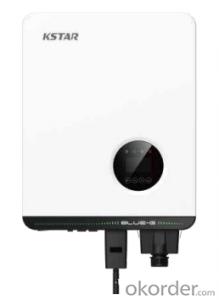PWM Solar Inverter PV On-Grid String Inverter Blue-G 1000S / Blue-G 1500S / Blue-G 2000S / Blue-G 3000S
- Loading Port:
- China main port
- Payment Terms:
- TT OR LC
- Min Order Qty:
- 50 pc
- Supply Capability:
- 15000 pc/month
OKorder Service Pledge
OKorder Financial Service
You Might Also Like
Specification
Product Description:
★Max. PV voltage up to 600V DC/AC ratio up to 1.5
★High efficiency up to 97.6% Smaller and lighter
★Type II DC SPD/Type III AC SPD IP65 protection
★Compatible for big capacity PV panel WiFi / 4G Plug optional
| MODEL | BluE-G 1000S | BluE-G 1500S | BluE-G 2000S | BluE-G 3000S |
| Input(DC) | ||||
| Max. DC voltage | 600Vdc | 600Vdc | 600Vdc | 600Vdc |
| Nominal voltage | 380Vdc | 380Vdc | 380Vdc | 380Vdc |
| Start voltage | 80V | 80V | 80V | 80V |
| MPPT voltage range | 80V-560V | 80V-560V | 80V-560V | 80V-560V |
| Number of MPP tracker | 1 | 1 | 1 | 1 |
| Strings per MPP tracker | 1 | 1 | 1 | 1 |
| Max. input current per MPPT | 15A | 15A | 15A | 15A |
| Max. short-circuit current per MPPT | 18A | 18A | 18A | 18A |
| Output(AC) | ||||
| Nominal AC output power | 1000W | 1500W | 2000W | 3000W |
| Max. AC apparent power | 1000VA | 1650VA | 2200VA | 3300VA |
| Nominal AC voltage | 230V L-N | 230V L-N | 230V L-N | 230V L-N |
| AC grid frequency range | 50Hz / 60Hz±5Hz | 50Hz / 60Hz±5Hz | 50Hz / 60Hz±5Hz | 50Hz / 60Hz±5Hz |
| Max. Output Current (A) | 4.8A | 7.2A | 9.6A | 14.4A |
| Power factor (cos ) | 0.8 leading to 0.8 lagging | |||
| THDi | <3% | |||
| Efficiency | ||||
| Max. efficiency | 97.00% | 97.50% | 97.50% | 97.60% |
| Euro efficiency | 96.50% | 97.00% | 97.00% | 97.00% |
| Protection devices | ||||
| DC switch | Yes | Yes | Yes | Yes |
| Anti-islanding protection | Yes | Yes | Yes | Yes |
| Output over current | Yes | Yes | Yes | Yes |
| DC reverse polarity protection | Yes | Yes | Yes | Yes |
| String fault Detection | Yes | Yes | Yes | Yes |
| Surge protection | DC Type III;AC Type III | |||
| Insulation detection | Yes | Yes | Yes | Yes |
| AC short circuit protection | Yes | Yes | Yes | Yes |
| General Specifications | ||||
| Dimensions W x H x D (mm) | 350*290*120mm | |||
| Weight(kg) | 7.3kg | 8kg | 8kg | 8kg |
| Environment | ||||
| Operating temperature range | –25℃~+60℃ | |||
| Cooling type | Natural | |||
| Max. operation altitude | 4000m | |||
| Max. operation humidity | 0-100% | |||
| AC Output terminal type | Quick connector | |||
| Topology | IP65 | |||
| IP class | Transformer-less | |||
| Communication Interface | RS485/WIFI/4G | |||
| Display | LCD | |||
| Certification & Standard | EN/IEC62109-1/2;IEC/EN61000-6-2;IEC/EN61000-6-4;IEC62116;IEC61727;EN50549-1 | |||
FAQ:
Q:How the output voltage of the PV inverter and the grid-connected voltage are determined
Inverter is the DC power (battery, battery) into alternating current (usually 220V, 50Hz sine wave). It consists of inverter bridge, control logic and filter circuit. Widely used in air conditioning, home theater, electric wheel, power tools, sewing machines, DVD, VCD, computer, TV, washing machine, range hood, refrigerator, video recorders, massage, fan, lighting and so on. In foreign countries
Q:Installation and maintenance of photovoltaic grid - connected inverter
only when the local power sector permission by the professional and technical personnel to complete all the electrical connection before the inverter can be connected.
Q:What is the difference between a PV grid-connected inverter and an off-grid inverter?
Off-grid inverter is equivalent to their own to establish an independent small power grid, mainly to control their own voltage, is a voltage source.
Q:After the PV inverter, how to achieve the same period before the network?
Solar panel simulator: with MPPT function, simulated morning, noon, afternoon, evening, rainy weather, solar panels produced under different conditions in different voltages.
Q:Is the PV inverter a current source or a voltage source?
According to the waveform modulation method can be divided into square wave inverter, stepped wave inverter, sine wave inverter and modular three-phase inverter.
Q:Photovoltaic grid-connected inverter without DC emc how will happen
Solar photovoltaic power generation technology is the use of solar cells, the photovoltaic effect of semiconductor materials, solar radiation can be directly converted into a new type of power generation system, solar energy is a radiant energy, solar power means --- to direct conversion of sunlight Into electricity,
Q:What is the difference between low voltage grid connection and medium voltage grid connection?
For photovoltaic power plants when the power system accidents or disturbances caused by photovoltaic power plant grid voltage drop, in a certain voltage drop range and time interval, the photovoltaic power plant can ensure that non-off-line continuous operation.
Q:Is the grid side of the grid and the inverter?
The grid load side of the grid is the grid. The inverter is an important part of the PV grid-connected system and can not be regarded as an external load. Photovoltaic power generation system is included in both grid and off-grid.
Q:PV grid-connected inverter and independent inverter in the control of what is the difference
The independent inverter in the output voltage phase amplitude of the frequency control is initially set good. Independent inverter, you should refer to off-grid inverter, do not need to consider the grid situation.

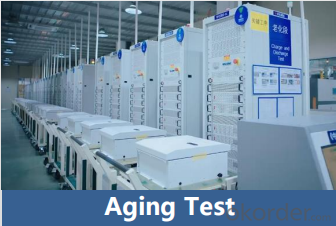
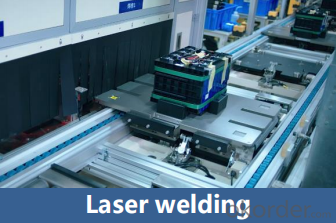
- Q: What is the purpose of a solar inverter in a solar power system?
- The purpose of a solar inverter in a solar power system is to convert the direct current (DC) electricity generated by the solar panels into alternating current (AC) electricity that can be used to power household appliances or be fed back into the grid.
- Q: How does a solar inverter handle grid synchronization during startup?
- A solar inverter handles grid synchronization during startup by employing advanced control algorithms. It continuously monitors the grid voltage and frequency, aligns itself with the grid parameters, and gradually increases its output power to match the grid. This synchronization process ensures that the solar inverter seamlessly integrates with the grid and provides stable and synchronized power generation.
- Q: How does a solar inverter handle voltage and frequency variations caused by grid disturbances?
- A solar inverter is designed to handle voltage and frequency variations caused by grid disturbances by employing various control mechanisms and protection features. Firstly, the inverter continuously monitors the voltage and frequency levels of the grid, and it adjusts its output accordingly to match the grid's requirements. If there is a voltage or frequency fluctuation, the inverter will either increase or decrease the output power to maintain the desired voltage and frequency levels. To handle voltage variations, the solar inverter utilizes a voltage regulation mechanism. If the grid voltage increases or decreases beyond a certain threshold, the inverter adjusts its internal voltage regulation circuitry to ensure a stable and regulated output voltage. This helps protect the inverter and connected devices from potential damage due to overvoltage or undervoltage conditions. Similarly, to handle frequency variations, the solar inverter incorporates a frequency control mechanism. If the grid frequency deviates from the specified range, the inverter adjusts its internal frequency control circuitry to maintain a stable and accurate output frequency. This ensures that the power generated by the solar panels remains synchronized with the grid, allowing for efficient power transfer and preventing any damage to the inverter or connected devices. Furthermore, solar inverters often include advanced features such as anti-islanding protection. This feature detects any abnormal grid conditions, such as voltage or frequency fluctuations beyond a safe limit. If an islanding condition is detected, where the solar system continues to generate power even when the grid is down, the inverter will disconnect from the grid to prevent any potential safety hazards for utility workers. Overall, a solar inverter is designed to handle voltage and frequency variations caused by grid disturbances through continuous monitoring, voltage regulation, frequency control, and protective features. These capabilities ensure reliable and safe operation of the solar power system while maintaining a stable connection with the utility grid.
- Q: Can a solar inverter be used with different types of power control devices?
- Yes, a solar inverter can be used with different types of power control devices. Solar inverters are designed to convert the direct current (DC) produced by solar panels into alternating current (AC) that can be used to power various electrical devices. They can be integrated with different power control devices such as charge controllers, smart energy management systems, and battery storage systems to optimize the efficiency and performance of the solar power system.
- Q: What is the role of a DC-DC converter in a solar inverter?
- The role of a DC-DC converter in a solar inverter is to convert the direct current (DC) generated by the solar panels into the appropriate voltage level required for the inverter to convert it into alternating current (AC) electricity. This conversion ensures efficient power transfer from the solar panels to the grid or for use in residential or commercial applications.
- Q: Can a solar inverter be used with solar-powered telecommunications systems?
- Yes, a solar inverter can be used with solar-powered telecommunications systems. Solar inverters are devices that convert the direct current (DC) generated by solar panels into alternating current (AC) that can be used to power various electrical devices, including telecommunications systems. By using a solar inverter, the solar energy captured by the panels can be efficiently utilized to power the telecommunications equipment, making it a suitable and environmentally-friendly solution.
- Q: How does a solar inverter synchronize with the electrical grid?
- A solar inverter synchronizes with the electrical grid by constantly monitoring the grid's voltage and frequency. It adjusts its own output voltage and frequency to match those of the grid, ensuring seamless integration and safe operation. This synchronization process allows the solar inverter to feed power into the grid and maintain grid stability.
- Q: How does a solar inverter handle voltage sags and swells?
- A solar inverter handles voltage sags and swells by constantly monitoring the grid voltage. When a sag or swell is detected, it quickly adjusts its output voltage accordingly to ensure a stable and consistent flow of power to the connected solar panels. This helps protect the panels from potential damage and maintains optimal performance.
- Q: Can a solar inverter be used with a solar-powered electric fence system?
- Yes, a solar inverter can be used with a solar-powered electric fence system. The solar inverter is responsible for converting the direct current (DC) generated by the solar panels into alternating current (AC) to power the electric fence system. This allows the solar panels to efficiently charge the battery and power the electric fence, providing a renewable and sustainable energy solution.
- Q: Can a solar inverter be used in extreme weather conditions?
- Yes, solar inverters are designed to withstand extreme weather conditions. They are typically built with durable materials and undergo rigorous testing to ensure they can operate in extreme temperatures, high humidity, and even harsh weather conditions such as heavy rain or snow. However, it is always recommended to consult the manufacturer's guidelines and take necessary precautions to protect the inverter during extreme weather events.
Send your message to us
PWM Solar Inverter PV On-Grid String Inverter Blue-G 1000S / Blue-G 1500S / Blue-G 2000S / Blue-G 3000S
- Loading Port:
- China main port
- Payment Terms:
- TT OR LC
- Min Order Qty:
- 50 pc
- Supply Capability:
- 15000 pc/month
OKorder Service Pledge
OKorder Financial Service
Similar products
Hot products
Hot Searches
Related keywords
